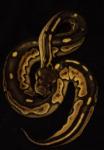» Site Navigation

1 members and 860 guests
Most users ever online was 47,180, 07-16-2025 at 05:30 PM.
» Today's Birthdays

» Stats

Members: 75,937
Threads: 249,130
Posts: 2,572,295
Top Poster: JLC (31,651)
|
-
-
-
What's Going on With These Eggs? Transparent Looking.
I use substrateless, but my guess is your substrate is too wet. Grabs some light diffuser grating and suspend your eggs out of it.
~~~~~~~~~~~~~~~~~~~~~~~~~~~~~~~~~~~~~~~~~~~~~~~~


-
The Following User Says Thank You to Annarose15 For This Useful Post:
-
Registered User


Were the eggs like that when they were laid? I'm thinking she didn't have enough calcium to fully form the shells. If they came out normal but then changed to look like that later on then I'd take Annarose15's advice!
1.0 OD YB Spider
1.0 Orange Dream Yellowbelly
0.1 Pastel
0.1 Pastel Calico
0.1 Pastel Enchi Yellowbelly
-
-
They looked normal when they came out.
-
-
Registered User


What's Going on With These Eggs? Transparent Looking.
Too much moisture underneath the eggs. Definitly puts them on something to have them sitting above the substrate.
I had ONE egg have a "silver dollar size" spot that looked similar to that. It went full term and hatched completely healthy
Http://www.BCBallPythons.com
Http://www.facebook.com/bcballpythons
-
The Following User Says Thank You to BCBallPythons For This Useful Post:
-
Registered User


Re: What's Going on With These Eggs? Transparent Looking.
we had a clutch last year with a "cheater peek" window. the baby hatched out strong & healthy so just keep tabs on temp & humidity... sometimes abnormalities occur but they arent necessarily harmful. good luck! 
If a tree falls in the woods and nobody hears it.... I'm bringing home another Ball Python. 
-
The Following User Says Thank You to DancingFlutterby For This Useful Post:
-
Hmm, think I would be ok sucking some of the water out of the substrate with a paper towel or three (then trashing the paper towels of course)?
-
-
Re: What's Going on With These Eggs? Transparent Looking.
Hi,
They are definitely getting too wet from the substrate.
dr del
Derek
7 adult Royals (2.5), 1.0 COS Pastel, 1.0 Enchi, 1.1 Lesser platty Royal python, 1.1 Black pastel Royal python, 0.1 Blue eyed leucistic ( Super lesser), 0.1 Piebald Royal python, 1.0 Sinaloan milk snake 1.0 crested gecko and 1 bad case of ETS. no wife, no surprise.
-
The Following User Says Thank You to dr del For This Useful Post:
-
Looks like they're too wet.
Use Elmers Glue on the windows to keep it from spreading after the moisture issue is fixed.
-
The Following User Says Thank You to Luke Martin For This Useful Post:
-
Your eggs look like that because they got wet on the bottom. Not much you can do about it now, if it doesn't get worse they'll probably be fine. I used to incubate my eggs like that for many years and hatched hundreds of babies but the problem is that it's really easy to have too much moisture in the substrate. It shouldn't feel damp at all in fact it should feel fairly dry but will hold together when you sqeeze a bunch of substrate in your hand (kind of like a snowball only dryer) The eggs need to be in a very humid environment but not necessarily a damp one.
For the last several years though I've been using a substrateless method (so called because the eggs sit above the substrate and not in it). It's a lot easier to monitor the moisture in the egg box this way and you don't have to worry about getting the right water/substrate ratio. Here is a picture of a couple of egg boxes I set up last week. I put a couple of inches of perlite in the egg box and soak it real good. No need to measure, just pour water until it gets almost to the top of the perlite. The perlite just adds more surface area from which the water can evaporate. Then there is a plastic mesh sitting on top to keep the eggs off of the perlite (the plastic mesh is a light diffuser from a florescent light fixture cut to fit inside the egg box) The eggs then sit on top and are held above the moist substrate instead of sitting in it. Then I put a piece of glad press n seal plastic wrap on top of the egg box to make it tight so I don't lose a lot of moisture through evaporation then put the lid of the egg box on top of that. The whole thing then goes into the incubator. I've found this to be a lot more fool proof then measuring out water and substrate to make sure you have the right ratios.

Sorry this got so wordy. Hope you find it helpful.
-
The Following User Says Thank You to MarkS For This Useful Post:
 Posting Permissions
Posting Permissions
- You may not post new threads
- You may not post replies
- You may not post attachments
- You may not edit your posts
-
Forum Rules
|








 Reply With Quote
Reply With Quote




